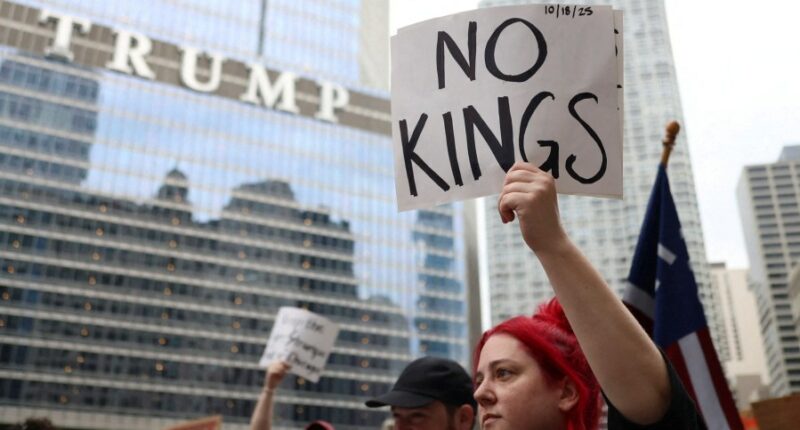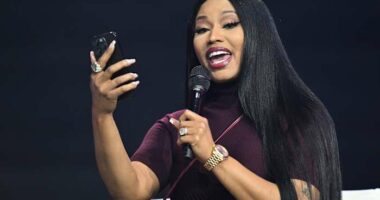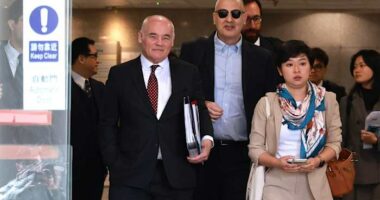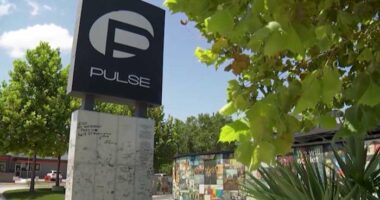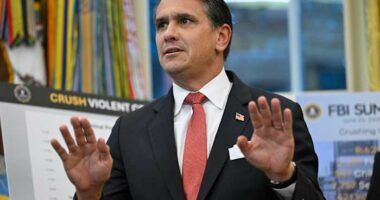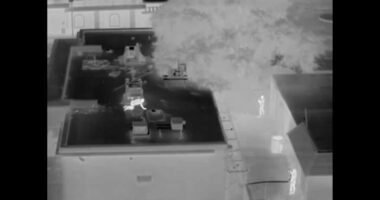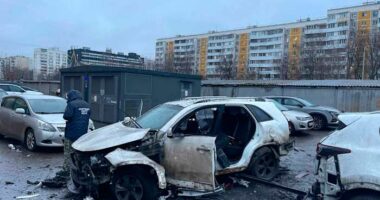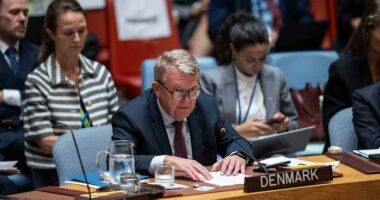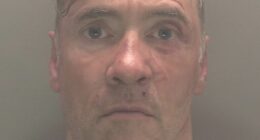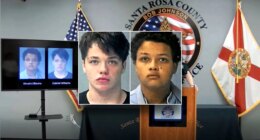Share this @internewscast.com

On Saturday, crowds of protesters from various age brackets gathered en masse for “No Kings” demonstrations across the United States, voicing their opposition to what they perceive as President Trump’s authoritarianism and rampant governmental corruption.
Event organizers anticipated that millions would participate by day’s end, with over 2,600 rallies scheduled in cities large and small, as well as suburban areas. These gatherings aimed to oppose a Trump-driven agenda that has rapidly transformed government operations and disrupted democratic principles since his inauguration in January.
Reports indicated that the demonstrations were mostly upbeat, featuring giant inflatable figures and costumed participants. The diverse mix of attendees included parents with children in strollers, alongside retirees and individuals accompanied by their pets.
There was minimal, if any, lawlessness observed during the events.
Disillusioned with Trump
“The essence of American values is about rejecting monarchy and exercising our right to peaceful protest,” stated Leah Greenberg, co-founder of Indivisible, a progressive group that played a key role in organizing the day’s activities.
In New York City’s Times Square, the police reported “zero protest-related arrests,” despite more than 100,000 people gathering peacefully throughout all five boroughs.
Events in Boston, Philadelphia, Atlanta, Denver, Chicago and Seattle also drew crowds that each appeared to encompass thousands, if not tens of thousands, of people.
On the West Coast, more than a dozen rallies occurred around the Los Angeles area, including the primary site downtown. In Seattle, demonstrators filled a parade route that stretched for more than a mile from downtown through the Seattle Center plaza around the city’s landmark Space Needle. More than 25,000 protested peacefully in San Diego, police said.
The protests reflected growing unease among many Americans, mainly on the ideological left, with developments such as the criminal prosecution of Trump’s perceived political enemies, , his militarized immigration crackdown and the sending of National Guard troops into U.S. cities a move Trump has said was aimed at fighting crime and protecting immigration agents.
As his administration has tried to rapidly implement its policies, Trump has installed inexperienced loyalists throughout the ranks of his administration and sought to apply pressure on the news media, law firms and universities.
Saturday’s rallies were boisterous but orderly, with police largely keeping a low profile.
Demonstrators filled a street in Washington, D.C., to march toward the U.S. Capitol, chanting and carrying signs, U.S. flags and balloons, as a carnival-like atmosphere prevailed.
Aliston Elliot, wearing a Statue of Liberty headpiece and holding a “No Wannabe Dictators” sign, said: “We want to show our support for democracy and fighting for what is right. I’m against the overreach of power.”
In downtown Houston, U.S. Marine Corps veteran Daniel Aboyte Gamez, 30, joined a crowd that officials said numbered about 5,000 at city hall.
“I don’t understand what’s going on in this nation right now,” said Gamez, who served in Iraq, Afghanistan and Syria.
‘Former Republican’
Kevin Brice, 70, a military veteran among thousands of protesters streaming into the riverfront of Portland, Oregon, wore a black sweatshirt emblazoned with the slogan “No Kings since 1776,” referring to the year of the Declaration of Independence.
“Everything that I thought that I stood for while I was serving in the military seems to be at risk,” Brice said. “So, even though I’m a lifelong Republican, I don’t support the direction the party is going.”
Steve Klopp, 74, a Houston-based oil industry retiree, expressed similar sentiments as he wore a shirt printed with the words “Former Republican.”
“I’ve been a Republican forever,” Klopp said. “My family’s been Republican forever and ever. And the idea that one individual could have turned me away from the Republican Party is insane.”
Kelly Kinsella, 38, standing among several thousand people outside the Colorado statehouse in Denver, was dressed as Lady Liberty with bloody tears dripping down her face.
“Everyone comes to work stressed, and it’s because of the current conditions,” said Kinsella, who said she was motivated to turn out largely because of renewed inflation that she blamed on Trump’s tariff policies.
Trump has said little about Saturday’s protests. But in an interview with Fox Business aired on Friday he said that “they’re referring to me as a king I’m not a king.”
While the Democratic Party has coped with internal divisions since Trump won re-election last year, party establishment figures such as Senate Minority Leader Chuck Schumer and progressive firebrands like U.S. Representative Alexandria Ocasio-Cortez both voiced support for the “No Kings” movement.
Saturday’s protests were aimed at building on momentum gained from more than 2,000 “No Kings” protests that were staged on June 14, coinciding with Trump’s 79th birthday and a rare military parade in Washington.
House Speaker calls protests Anti-American
House of Representatives Speaker Mike Johnson, a Republican, on Friday echoed a common refrain among his party, labeling the “No Kings” protests “the hate America rally.”
Other Republicans have accused protest organizers of stoking an atmosphere that they said might spur political violence, especially in the wake of the September assassination of right-wing activist and Trump ally Charlie Kirk.
Vice President JD Vance, speaking on Saturday to a gathering of Marines at Camp Pendleton in Southern California, made no mention of the protests. But he criticized Democrats over the government shutdown that began early this month in a partisan standoff over federal appropriations.
Dana Fisher, an American University professor in Washington and author of several books on political activism, predicted that Saturday could see one of the largest protest turnouts in modern U.S. history.
She expected that more than 3 million people would take part based on registrations and participation in the June events. Overall turnout for the June 14 rallies was estimated at 4 million to 6 million, according to a crowd-sourcing analysis published by prominent data journalist G. Elliott Morris.
